跨文化交际-黑龙江大学-崔常亮老师-(no text B)chapter 2 Communication and International Communication
- 格式:ppt
- 大小:3.48 MB
- 文档页数:38
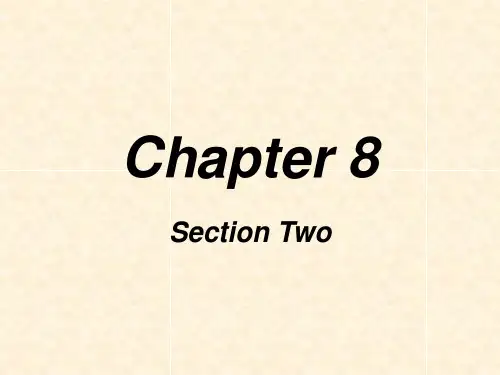
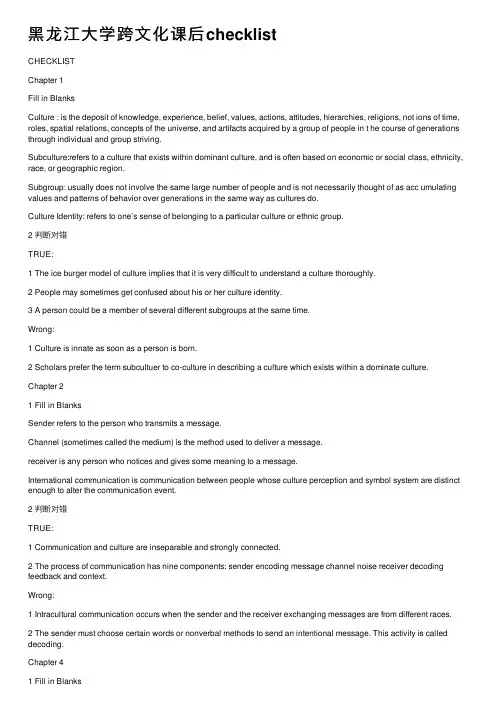
⿊龙江⼤学跨⽂化课后checklistCHECKLISTChapter 1Fill in BlanksCulture : is the deposit of knowledge, experience, belief, values, actions, attitudes, hierarchies, religions, not ions of time, roles, spatial relations, concepts of the universe, and artifacts acquired by a group of people in t he course of generations through individual and group striving.Subculture:refers to a culture that exists within dominant culture, and is often based on economic or social class, ethnicity, race, or geographic region.Subgroup: usually does not involve the same large number of people and is not necessarily thought of as acc umulating values and patterns of behavior over generations in the same way as cultures do.Culture Identity: refers to one’s sense of belonging to a particular culture or ethnic group.2 判断对错TRUE:1 The ice burger model of culture implies that it is very difficult to understand a culture thoroughly.2 People may sometimes get confused about his or her culture identity.3 A person could be a member of several different subgroups at the same time.Wrong:1 Culture is innate as soon as a person is born.2 Scholars prefer the term subcultuer to co-culture in describing a culture which exists within a dominate culture. Chapter 21 Fill in BlanksSender refers to the person who transmits a message.Channel (sometimes called the medium) is the method used to deliver a message.receiver is any person who notices and gives some meaning to a message.International communication is communication between people whose culture perception and symbol system are distinct enough to alter the communication event.2 判断对错TRUE:1 Communication and culture are inseparable and strongly connected.2 The process of communication has nine components: sender encoding message channel noise receiver decoding feedback and context.Wrong:1 Intracultural communication occurs when the sender and the receiver exchanging messages are from different races.2 The sender must choose certain words or nonverbal methods to send an intentional message. This activity is called decoding.Chapter 41 Fill in BlanksEthnocentrism:refers to negatively judging aspects of another culture by the standards of one’s own culture Prejudice: It refers to the irrational dislike, suspicion, or hatred of a particular group, race, religion, or sexual orientationRacism: It refers to any policy, practice, belief, or attitude that attributes characteristics or status to individua ls based on their raceStereotypes: They refer to negative or positive judgments made about individuals based on any observable or believed group membership2 判断对错TRUE:1 Ethnocentrism stereotypes prejudice and racism are learned.2 Although stereotypes are considered as being negative judgments,they can also be positive.3 When communicating with people other cultures,an individual sometimes is likely to treat them as“his people”and to assume there is only one way of doing things: that is “his way”Wrong:1 Assumption of superiority may lead to assuming similarity instead of difference.2 Economy is not the reason for the persistence of ethnocentrism, stereotyping, prejudice and racism.Chapter 51 Fill in BlanksVerbal intercultural communication happens when people from different cultural backgrounds communica te with each other by using language.Pidgin is a special language variety that mixes or lends languages for restricted purposes such as trading Dialect is a form of language peculiar to a group of people, as distinguished from the literary language of the whole people.Taboo refers to prohibition of a set of behaviors that should be avoided because they are offensive and impol ite2 判断对错TRUE:1 The elaborate,exacting,or succinct communication style deals with the quantity and/or volume of talk that is preferred across cultural groups.2 Dialect refers to geographic variation, while sociolect refers to variation in terms of social group.3 An elaborate style of communication can be seen in Arab cultures.Wrong:1 The exacting style of communication can be found in Japan,China,and some Native American cultures2 The self-effacement verbal styles emphasizes the importance of boasting about one’s accomplishments and abilities. Chapter 61 Fill in Blanksnonverbal communication: It refers to the messages sent without using words.Oculesics: It is the study of communications sent by the eyes.Proxemics: is the way we use fixed space and personal space.Kinesics includes gestures, body movement and facial expressionsChronemics: It is the study of how people perceive and use time.2 判断对错TRUE:1 Saudi Arabs belong to touch cultures.2 The appropriateness of eye contact varies with different cultures.Wrong:1 Speaking is the only mode of effective communication.2 The Thais like to touch babies or small children,especially they like others to pat their children’s head.3 Paralanguage may imply the connotation of the actual words.Chapter 71 Fill in Blanks1 Members in the culture of high Uncertainty avoidance have a lower tolerance for uncertain and ambiguity.2 Individuals from high power distance accept power as part of society.As a result,superiors consider their subordinates to be different from themselves and vice versa.3 People from high masculine cultures tend to see same-sex relationships as more intimate than opposite-sex relationships.4 In collective societies such as those in Pakistan,Colombia,Venezuela,China and Peru people are born into extended families that support and protect them in exchange for their loyalty.2 判断对错TRUE:1 In industrialized societies like the United States,the mastery-over-nature view tends to predominate.2 A doing orientation involved in focus on those types of activities which have outcomes that can be measured by someone else.3 In Beijing cultures,social status and position are more important than what a person does.Wrong:1 The harmony-with-nature orientation draws clear distinctions among human life,nature,and the supernature2 Both Americans and British shoe respect for tradition.Chapter 81 Fill in Blanks1 In Japan ,business is not conducted in obon (in mid-August),because many people travel to the graves of their ancestors.2 In India ,“the traditional greeting is the namaste formed by pressing the palms together,fingers up,below the chin.A slight bow may be added to show respect.”3 In Israel,the Jewish holy night, the sabbath begins at sunset on Friday and ends at sunset onSaturday.Therefore, the business week runs from Saturday through Thursday.Conducting business on the holy day would be highly inappropriate.4 In Saudi Arabia. No business is conduced during the three-day festival of breaking fast at the end of the month of Ramadan.2 判断对错TRUE:1 In Finland, firm handshakes are the normal greeting for men and women.2 Americans might regard gift giving as a form of bribery.3 Mexican negotiators emphasize relational concerns prior to the real negotiation.Wrong:1 In Saudi Arabia,the greeting tend to be informal.Both men and women shake hands on meeting and leaving.2 In Japan,one should open the gift in front of the giver.Chapter 91 Fill in BlanksHoneymoon is the first stage of the interculture adaptation when everything is new and exciting. Segregation occurs because the more politically and economically powerful culture does not want the interc ultural contact with the immigrants Integration: is desire a high level of interaction with the host culture while maintaining identity wit h their native culture Assimilation is a process in which members of an ethnic group are absorbed into the dominant culture, losin g their culture in the process.Marginalization occurs when the individual chooses not to identify with his or her native culture or with the host culture.2 判断对错TRUE:1 Successful management of culture shock depends on an awareness of its symptoms and the degree of its severity.2 Financial matters can results in culture shock.Wrong:1 Similarity of culture does not affect acculturation.2 The second stage of interculture adaptation is called honeymoon stage or initial euphoria stage.3 All the activities of learning one’s culture are called acculturation.4 Insomnia can be one example of the physical symptoms of culture shock,。
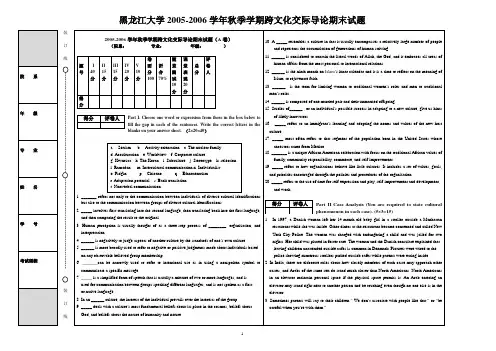
![跨文化交际课123[1]](https://uimg.taocdn.com/0e506a1c59eef8c75fbfb331.webp)

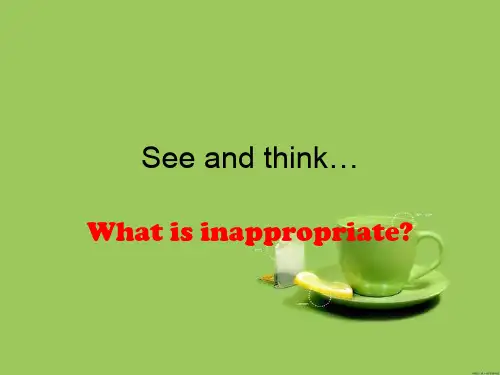

2007年2月黑龙江教育学院学报Feb.2007第26卷第2期Journal of Heilongjiang C ollege of Education V ol.26N o.2跨文化翻译中的文化缺省现象与文化补偿策略李家春,崔常亮(黑龙江大学外语部,哈尔滨150080)摘 要:跨文化视阈下,由于汉英两种文化历史传统和现实发展的差异,英语文本的可译性受到较大限制。
原文中的文化缺省问题,干扰了跨文化信息传递,是翻译需要解决的重要问题。
译者需要审慎地对待原文的文化信息,采取适当的策略对文化缺省信息进行文化补偿,从而再现原文的艺术效果和美学价值,促进跨文化交流和异质文化的建构。
关键词:跨文化翻译;文化缺省;文化补偿 中图分类号:H059 文献标志码:A 文章编号:1001-7836(2007)02-0117-03 收稿日期:2006-11-04作者简介:李家春(1980-),女,黑龙江哈尔滨人,助教,从事翻译和跨文化交际研究;崔常亮(1979-),男,黑龙江哈尔滨人,助教,从事法律英语和翻译研究。
1 跨文化翻译和文化缺省现象翻译的目的是进行跨文化间的信息传递,既是一种跨文化交际活动,又是一种建构异质文化的过程。
跨文化翻译过程中,译者在理解与诠释异族文化特有的语言和文化现象时经常按照自己的文化习惯进行认知推理,难以正确把握原文作者的交际意图和文中的文化缺省现象,无法达到社会语用功效。
文化缺省是指作者在与其意向读者交流时对双方共有的相关文化背景知识的省略,是翻译需要解决的重要问题。
作者通常会在文中省略与原语读者共有的文化信息,缺省信息可以被特定的文化语境激活于读者的脑海中,使读者得到连贯的语义理解。
而译文读者遇到此类缺省时就会出现意义真空,难以调动语言之外的各种因素来参与话语理解并形成连贯的语义。
原语作者与读者之间的默契便在译者与译文读者之间失落,因此译者要具备双语和双文化能力,适当进行文化补偿,准确传达深层文化内涵。
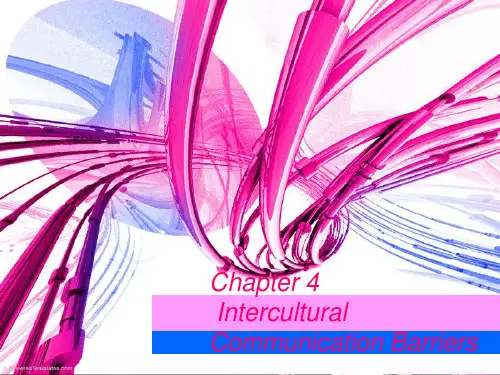



黑龙江大学跨文化交际英语复习总结(超全)跨文化考试总结考试构成:一、单选 1*10=10分。
(Choose the one that)其中有一部分是书中的概念。
二、判断1*10=10分。
(A—>true,B—>false) 课后习题第二大题,其中某些题是变动的。
要注重理解。
三、搭配1*20=20分。
matching 四组搭配,概念的对应,每一章课后的summary中的黑体字。
四、阅读理解1*20=20分。
四篇。
与课文中的专有词有关。
五、完型填空1*10=10分。
六、案例分析3*5=15分。
五个案例。
书中案例有四个,课外一个。
七、写作15分。
150+words。
可以准备一些跨文化、交际的文章。
四十分钟的写作时间。
8:00——8:40.作文提前收!注:前六大题是客观题即选择,只有写作是主观题。
课后题:(课后题第一第二大题老师也让多多关注,我这里就不多写啦,除了课后第一第二大题,我这里都全啦)1、P28——P302、P58——P613、P95——P974、P124——P1265、P159——P1626、P194——P1977、P237——P2408、P270——P2729、P304——P306所有概念关键词+考试范围内的CASE:Chapter 1 CultureKeywords(1) Culture (from intellectual perspective): Culture is “the arts and other mani festations of human intellectual achievement regarded collectively”(从知性角度定义文化:作为整体的人类智力成就的艺术和其他表现。
)(2) Culture (from anthropologic perspective): Culture consists of patterns, exp licit and implicit, of and for behavior acquired and transmitted by symbols, co nstituting the distinctive achievement of human groups, including their embod iments in artifacts; the essential core of culture consists of traditional ideas and especially their attached values”.(从人类学角度定义文化:文化由清晰和模糊的行为模式构成,这些模式通过符号获得并传播,这些符号由人类群体的特别成就构成,包括具体的人工制品。
《跨文化交际》课程标准2023年10月目录一、课程信息 (1)二、课程性质与任务 (1)(一)课程性质 (1)(二)课程任务 (2)三、课程目标与要求 (2)(一)课程目标 (3)(二)课程要求 (4)四、课程结构与内容 (5)(一)教学内容选择与组织原则 (5)(二)教学内容组织构架 (6)五、学生考核与评价 (8)六、教学实施与保障 (9)(一)教学实施 (9)1.教学理念 (9)2.教学模式 (9)3.教学方法与手段 (10)4.学法 (11)5.教学实施过程 (12)(二)教学实施保障 (14)1.师资保障 (14)2.教学资源保障 (14)一、课程信息课程名称:跨文化交际学时:64学分:4适用专业:旅游英语、商务英语、旅游管理、导游二、课程性质与任务(一)课程性质《跨文化交际》课程是旅游英语专业和商务英语专业的专业核心课程,同时也是旅游管理、导游等专业方向的专业基础课程,是一门理论知识和实践技能并重的理实一体化课程。
课程定位于培养学生利用现有教育资源,让学生掌握跨文化交际理论的基本知识,增强学生对跨文化交际中文化差异的敏感性,培养学生的跨文化交际能力,具备在多元文化背景中开展跨文化旅游交际活动的基本素质,达到有效解决各类因文化差异而产生的问题的职业要求。
课程安排在第三学期,后续课程有:旅游英语、英语口笔译实务、目的地和客源国概况等。
通过本课程学习,学生了解了对跨文化交际的基本理论,掌握了一定的跨文化服务能力。
本课程的学习对旅游英语专业人才职业能力培养和职业素养养成起着重要的支撑作用。
(二)课程任务课程主要帮助学生掌握跨文化交际的基本理论、基本技能以及相关的礼仪,经由跨文化交际基本理论指导下主要国家交际的介绍、理解和必要的运用,以培养学习者开展日常交往、接待、策划、谈判等必要的跨文化交际能力。
课程教学坚持以学生为主体,结合十二个模块的内容,突出对学生跨文化交际能力的训练,国际化视野和多元文化视野的培养。
跨文化判断对错〔checklist第二题〕1.T The iceberg model of culture implies that it is very difficult to understand a culture thoroughly.2.F Culture is innate as soon as a person is born.3.T People may sometimes get confused about his or her cultural identity.4.F Scholars prefer the term subculture to co-culture in describing a culture which exists within a dominant culture.5.T A person could be a member of several different subgroups at the same time.6.F Intercultural communication occurs when the sender and the receiver exchanging messages are from different races.7.T Communication and culture are inseparable and strongly connected.8.F The sender must choose certain words or nonverbal methods to send an intentional message. This activity is called decoding.9.T The process of communication has nine components:sender,encoding,message, channel, noise, receiver, decoding, feedback, and context.10.T No two of us can assume that our sensations are the same.Different stimuli can produce the same sensations.11.T The same stimuli can produce very different sensations.12.T Our perception are influenced by who we are, including the accumulation of our experience.13.F We give meaning to or “decode〞the information that we have selected and organized during the selection stage.14.T The psychological filters refer to the psychological factors, including the attitudes, beliefs, and dispositions of the individual.15.T Ethnocentrism, stereotyping, prejudice and racism are learned.16.T Although stereotypes are considered as being negative judgments,they can also be positive.17.T When communicating with people from other cultures,an individual sometimes is likely to treat them as〞his people〞and to assume there is only one way of doing things:that is〞his way〞.18.F Assumption of superiority may lead to assuming similarity instead of difference.19.F Industrialization is not the reason for the persistence of ethnocentrism,stereotyping,prejudice and racism.20.F An exacting style of communication can be found in Japan,China,and some Native American cultures.21.F The self-effacement verbal style emphasizes the importance of boasting about one’s accomplishments and abilities.22.T The elaborate,exacting,or succinct communication style deals with the quantity and/or volume of talk that is preferred across cultural groups.23.T Dialect refers to geographic variation,while sociolect refers to variation in terms of social group.24.T An elaborate style of communication can be seen in Arab cultures.25.F Speaking is the only mode of effective communication.26.F Chinese like to touch babies or small children,especially they like others to pat their children’s head.27.T Saudi Arabs belong to touch cultures.28.T The appropriateness of eye contact varies with different cultures.29.T Paralanguage may imply the connotation of the actual words.30.T Industrialized societies like the United States,the masteruy-over-nature view tends to predominate.31.F The harmony-with-nature orientation draws chear distinctions among human life,nature,and the supernatural.32.F Both Americans and British show respect for tradition.33.T A doing orientation involves a focus on those types of activities which have outcomes that can be measured by someone else.34.T In Being cultures,social status and position are more important than what a person does.35.F In Saudi Arabia,greetings tend to be informal. Both men and women shake hands on meeting and leaving.36.T In Finland,firm handshakes are the normal greeting for men and women.37.T Americans might regard gift giving as a form of bribery.38.F In Japan,one should open the gift in front of the giver.39.T Mexican negotiators emphasize relational concerns prior to the real negotiation.40.F Similarity of culture does not affect acculturation.41.T Successful management of culture shock depends on an awareness of its symptoms and the degree of its severity.42.F Similarity of culture does not affect acculturation.43.T Successful management of culture shock depends on an awareness of its symptoms and the degree of its severity.44.F The second stage of intercultural adaptation is called honeymoon stage or initial euphoria stage.45.F All the activities of learning one’s culture are called acculturation.46.F Insomnia can be one example of the physical symptoms of culture shock.47.T Financial matters can result in culture shock.。